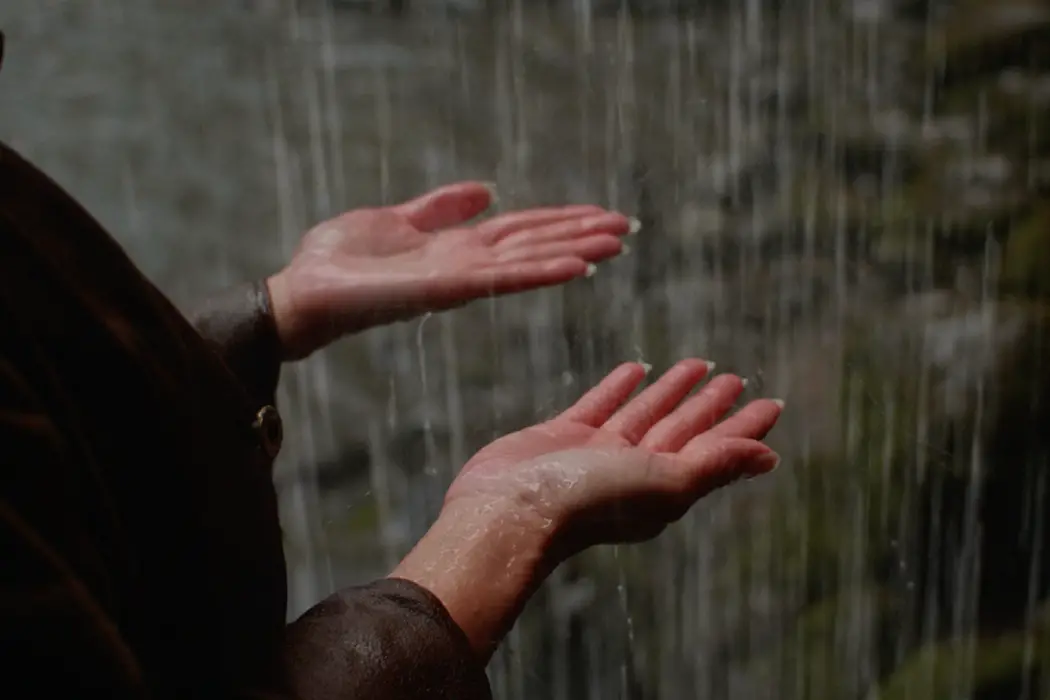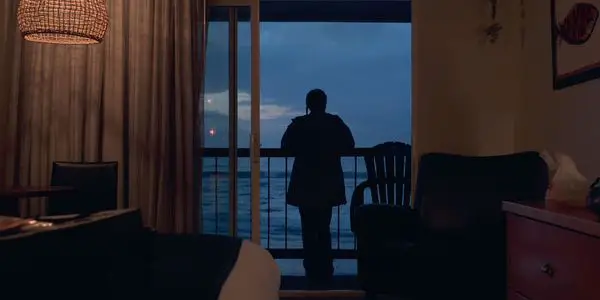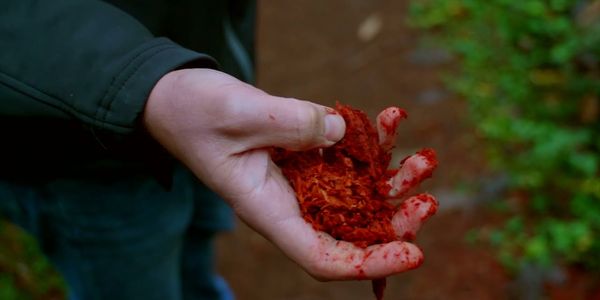MAŁNI – TOWARDS THE OCEAN, TOWARDS THE SHORE: Cycles of History

Soham Gadre is a writer/filmmaker in the Washington D.C. area.…
Many times, great cinema keeps you in the shadows and remains just out of reach. Sky Hopinka’s film małni: towards the ocean, towards the shore is an experimental film rooted in Chinook mythology and tradition. It is a deep and expansive mythology that has thousands of years of history behind it and considering the movie’s method of dispensing the ideas around it – through montage, impressionistic imagery, and poetic verse – it’s a fool errand to think you’ll have much of anything “figured out” about it. This type of cinema is many times the kind that’s truly radical, not because of its politics or its impressions of the world at large, but because it presents something evocative, unique, and un-replicable in its personal voice.
Cyles of History
małni is many things, among them a documentary, an experimental feature, an essay film, and also a narrative fable. Two individuals of the Chinook nation in Oregon, Sweetwater Sahme and Jordan Mercier, recount moments in their life, examinations of their identity, and opinions on death and rebirth. The film follows them in various natural and human-made habitats. Sweetwater walks around the Oregon forests, near waterfalls, and then later in the film, sitting cozily next to a sofa in her home. Jordan attends and participates in a local traditional song and dance in a gymnasium and on a football field. The overlapping dialogue is a stream of conscious reflection on the Chinook “death-myth”. Jordan describes this as a tale of two people, T’alap’as and Lilu, whose children die and they ask each other whether people who die come back on the fifth day, to conflicting answers. Hopinka, in an interview with Artforum says, “It’s the beginning of a longer cycle of myths that tells of a journey to the spirit world. As these stories tend to do, the cycle provides a model for understanding our own existence.”

Cycles of history are considered in the film as both in relation to preserving tradition and breaking from vice. Sweetwater contemplates the mistakes she made and history with alcohol and abuse in her family and hopes to break out of it to free future generations from its clutches. Jordan speaks about how he grows his hair in the traditional way not only to keep connection with his people and culture but to help young boys feel comfortable and unafraid to do the same despite potential bullying in school by white folks. Traditions are left incomplete and must be carried on in individual acts of connection. Jordan says after reciting the death-myth that “I think that’s how it goes, that’s about as much as I know”.
A Personal and Communal Approach To Storytelling
The film’s aesthetic choices also highlight tradition in conflict with time and erosion due to colonialism. Hopinka superimposes Chinuk Wawa subtitles whenever someone is speaking English and vice versa, keeping in line with the dual cultural conflict that many Chinook people, as well as Indigenous folks in general, feel about living and growing up in America.

The film utilizes interchanging sequences of a natural, wide-open expanse of the Chinook land (now Oregon) with gatherings in colonized, developed areas. One particular shot, of Chinook people rowing canoes with a backdrop of an industrial park by the riverside, highlights tradition carried on in an environment that no longer welcomes it.
Conclusion
But Hopinka’s film is not melancholy or bothered much with re-agitating Indigenous history in America that has been tread over time and again. Instead, the introspective nature of the film embodies a fully interpersonal, communal relationship between the Chinook people and the land they live on now. It’s filmed in a naturalistic way where what is on the screen is allowed to happen as is. Hopinka says “I was reluctant to overburden the film. Instead, I trusted the image and montage to create a space of understanding for the viewer.” Shots of forest trails and golden-hour seashores exhibit a Chinook native Oregon that still remains for the most part, as naturally beautiful as it ever was. While the world changes and time move on, the connection to the land is a constant for Indigenous people.
Have you seen małni: towards the ocean, towards the shore? What are your thoughts? Please share them in the comments below.
małni: towards the ocean, towards the shore is now playing in virtual cinemas and can be found on Projectr.
Watch małni: towards the ocean, towards the shore
Does content like this matter to you?
Become a Member and support film journalism. Unlock access to all of Film Inquiry`s great articles. Join a community of like-minded readers who are passionate about cinema - get access to our private members Network, give back to independent filmmakers, and more.
Soham Gadre is a writer/filmmaker in the Washington D.C. area. He has written for Hyperallergic, MUBI Notebook, Popula, Vague Visages, and Bustle among others. He also works full-time for an environmental non-profit and is a screener for the Environmental Film Festival. Outside of film, he is a Chicago Bulls fan and frequenter of gastropubs.













